Tomatoes are one of the most popular garden vegetables. But, since tomatoes are harvested in late summer, gardeners have to store the seeds for replanting during spring. So, how do you save tomato seeds for next year? And, do tomato seeds need to be dried before planting?
Tomato seeds retain highest germination rates when dried to between 6 – 9% moisture content. Fermentation of the seeds for about 48 hours, along with the tomato pulp produces higher germination rates. However, fresh tomato seeds can be dried on paper towels for 2-3 days before planting.
So, while you don’t need to dry tomato seeds for months before you can plant them, there are a few tips & tricks for how to do it. After all, it’s pretty disappointing to plant tomato seeds, & not have them grow. Let’s dive in & see the easiest, most reliable way to dry, store, plant, & grow tomato seeds.
Do you need to dry tomato seeds before planting?
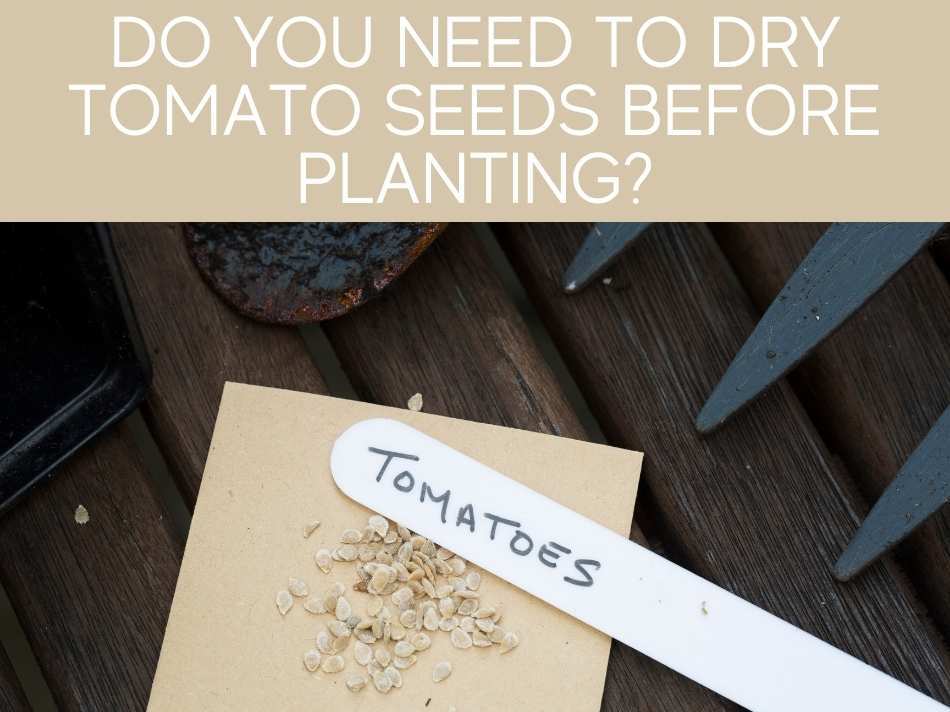
Drying seeds is a common agricultural practice used for ages right before seeds are planted.
And tomato seeds are no exception.
By properly drying your tomato seeds, growers can harvest many seeds from a single fruit.
Drying tomato seeds will keep the seeds in good shape during storage before the planting season.
Tomato seeds are usually enclosed in a gel-like sac that contains germination-inhibiting chemicals unless the seeds have a chance to stick into soil crevices.
If not dried, this gel residue can provide a safe haven for seed diseases thus a problem for stored seeds, and increase the chances of seeds rotting, thus, unsuitable for planting.
Drying tomato seeds is therefore important as it also helps avoid pests and diseases that can easily attack and feed on wet seeds.
Since you’re growing tomatoes, check out the complete tips & tricks for growing MORE tomatoes.
Can You Still Plant Fresh Tomato Seeds?
While it’s recommended to dry tomato seeds before planting them, it is important to also note that tomato seeds that have never been dried can also germinate.
This happens when the tomatoes are sliced open and spread under a very dry layer of soil to allow the gelatinous sac to be glued onto the soil and their germination to start.
The tomatoes will grow up through the rotting tomato slices, which act like the compost in the early stages of growing.
You can also scoop out the tomato seeds and simply layer them under a layer of soil before covering with an equal amount of organic mulch.
Burying these seeds deep will ensure they do not sprout, so many can survive the winter.
In spring, remove the mulch, gently manipulate the planted area with your hand, and cover the area with a warm fabric to warm up the soil.
You’ll then have tomato seedlings sprouting!
However, much yield is unlikely since some pests may feed on wet seeds.
Do tomato seeds have to be dried before planting?
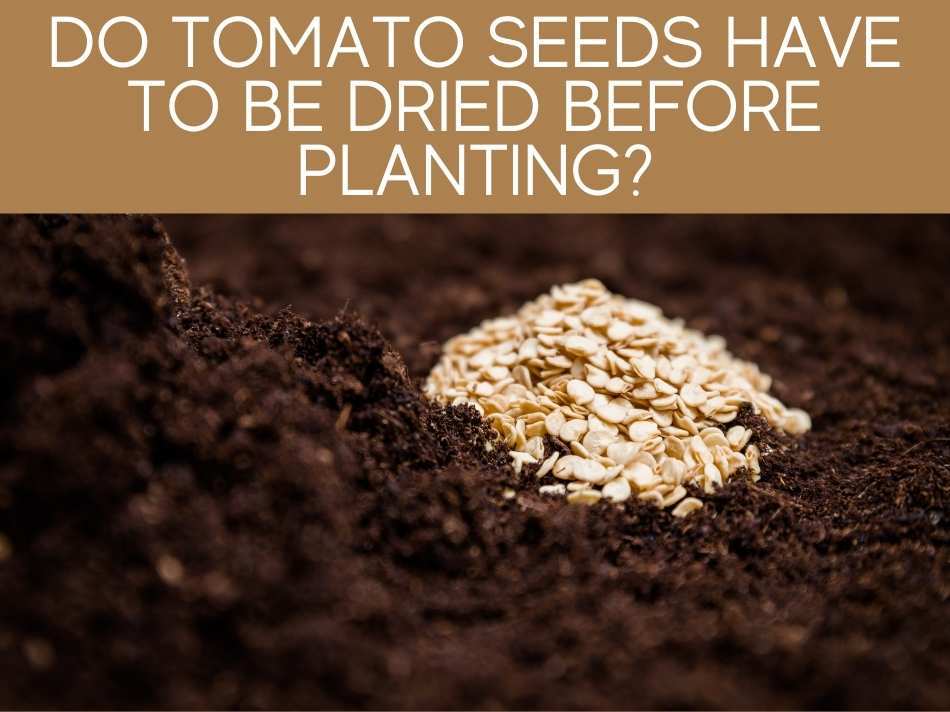
Ideally, tomato seeds are dried to preserve them for storage before the next planting season. During this time, the seeds are dormant.
However, gardeners advocate that before planting, it is important to soak your seeds before planting.
While tomato seeds don’t necessarily need to be soaked before they’re planted, if you want your tomato seeds to germinate faster once they are planted, try soaking them.
Soaking tomato seeds will swell and soften them; thus, softening the hull (i.e., seed coat) of the seeds and help the sprout break the seal so their little embryos can start coming out into the light of day.
Simply soak the tomato seeds in warm water the night before you’ll be planting them, and remove them first thing in the morning.
You can then start them in an indoor pot the next day.
Can you grow tomatoes from dried tomato seeds?
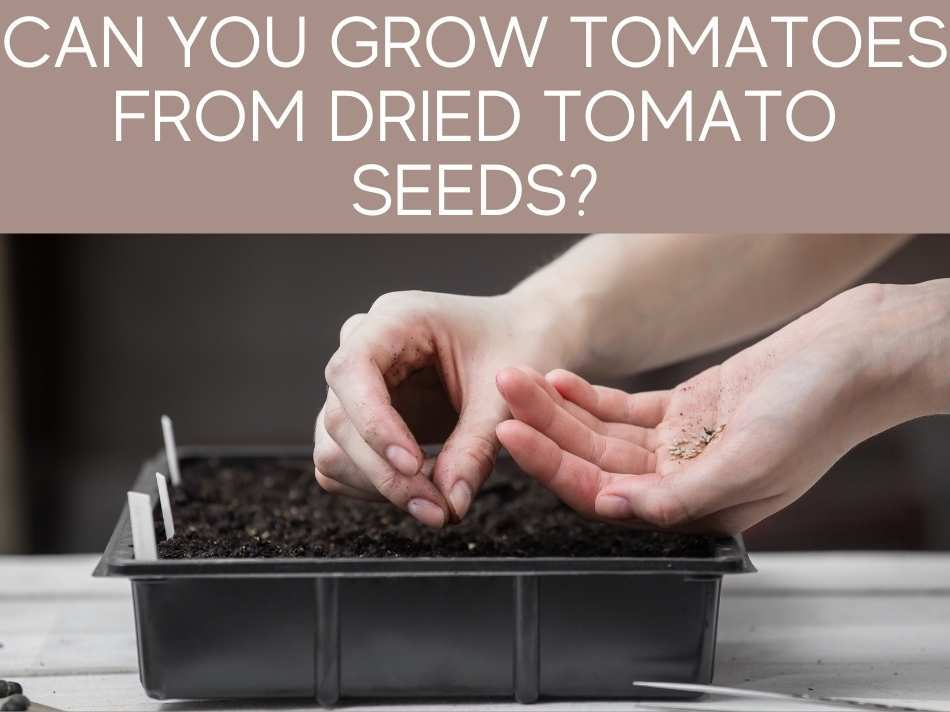
OK, so you had some fresh tomatoes–maybe heirloom or another NON-hybrid variety.
Why NON-hybrid tomatoes?
Because hybrid tomato seeds are created by crossing 2 different types of plants. The resulting plant has characteristics of both its parent plants.
But, the seeds from a hybrid plant may NOT be like the hybrid plant.
So, you can definitely grow seeds from dried tomato seeds. But you’ll want to use tomato seeds from an open-pollinated tomato variety–heirloom varieties are open-pollinated.
For more info on growing tomatoes from fresh seeds, check out our complete article.
How long do tomato seeds need to dry before planting?
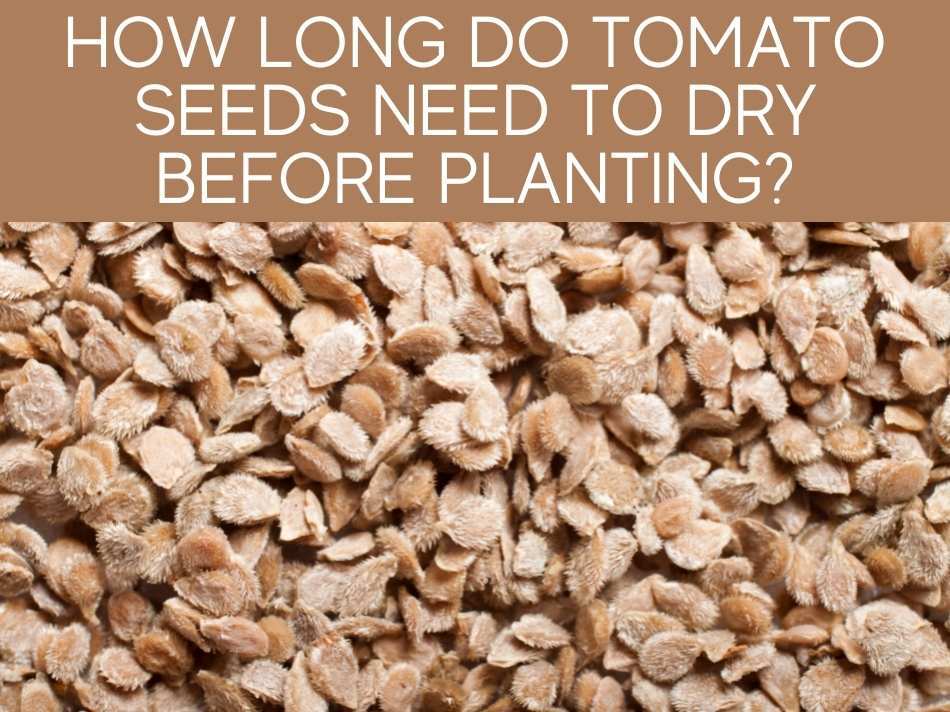
Thus, the sooner the seed is extracted from the fruit, cleaned and dried, the better the seed quality, which means more of the seeds will germinate.
However, if the rate at which seed dries out is too high, the resulting moisture stress can damage the embryo.
Therefore, the seed should be dried carefully to arrest stress damage due to heat.
In contrast, if moisture elimination takes place too slowly, it may favor the invasion of pathogens.
Hence, commercial growers prefer drying the seed out within a period of 48 hours.
As a result, the seeds could be stored for a longer period without losing viability and vigor.
The seeds can be further dried for a week or two at room temperature in a well-ventilated space, ensuring they do not crumble together by stirring them.
How to Pick the Best Tomato Seeds Before Drying & Planting
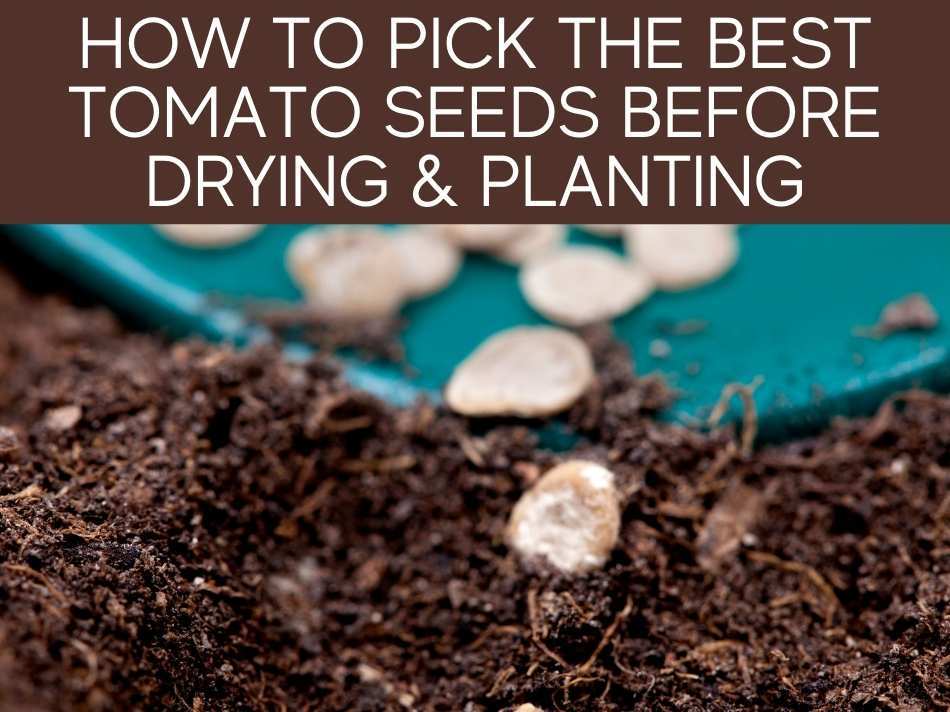
Ideally, tomato seeds should be:
1. Fresh and fully mature
Before drying, and probably, planting your seeds, pick out fresh and fully-matured tomatoes.
In this case, you need to let the tomato fruit fully ripen before saving the seeds.
This is because immature seeds will have a lower rate of germination and will not be able to absorb water.
These immature seeds are also highly susceptible to pests and diseases, which may spread to other healthy seeds.
2. Open-pollinated tomatoes
For the best yield, also pick seeds from open-pollinated tomatoes.
These are tomato seeds from a “mother” plant whose seeds produce tomatoes exactly like those of the mother plant.
On the other hand, hybrid tomatoes are produced from two varieties of tomato crossing to produce a desired offspring.
The limitation of this is that the seeds may not produce the tomato you want.
3. Disease-free
Always save tomato seeds from healthy plants with the best fruit quality to ensure a great yield during harvest.
How to Dry and Store Tomato Seeds
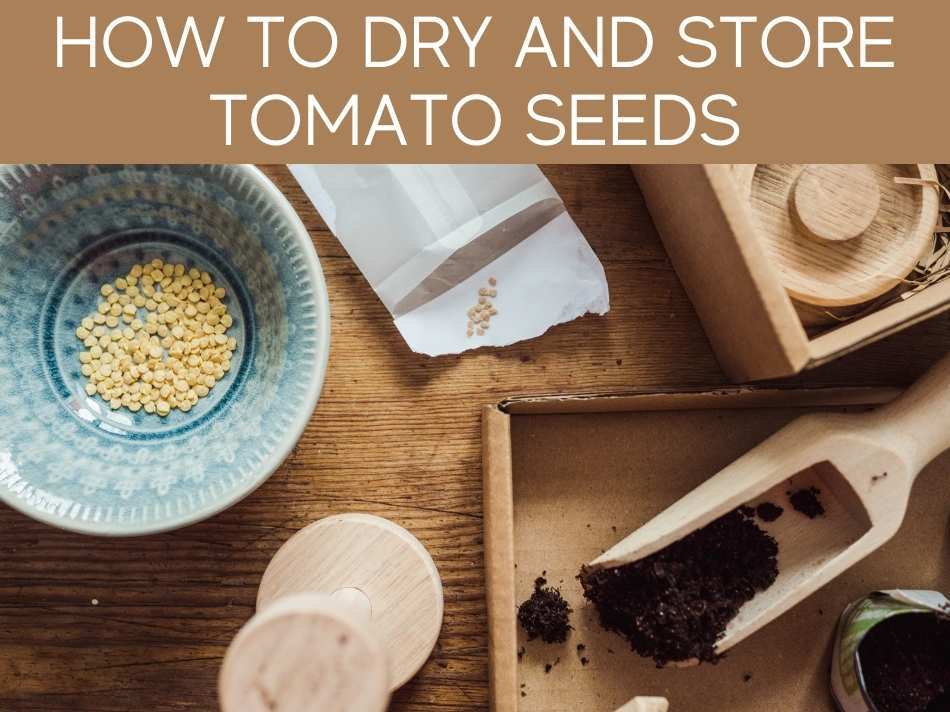
While some people consider sun drying their tomato seeds, this is not recommended, since it might degrade your tomato seeds.
Fermenting your tomato seeds helps break down that anti-sprouting protective gel layer.
How to dry and store tomato seeds using fermentation
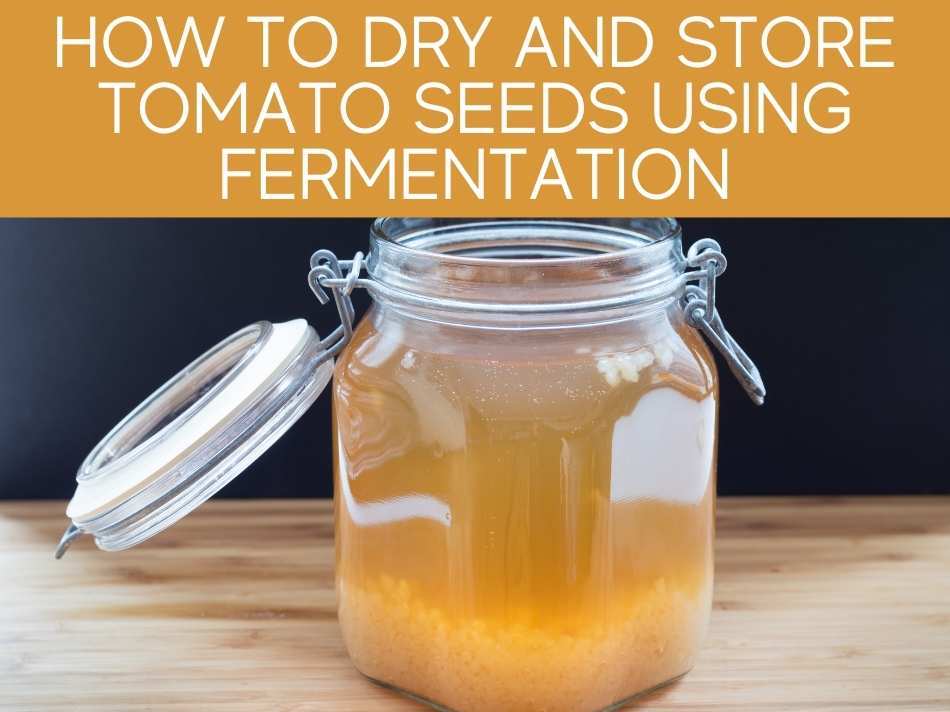
Wash your ripe tomatoes thoroughly and cut them open in halves to expose the gel and seeds in the center of the fruit.
Scoop out the seeds, and add them into a container.
- Add as much water to the container to completely soak up the seeds.
- Stir several times a day, ideally, twice a day, for one to three days. Leaving your tomato seeds in water for too long will have a negative effect on germination. Some seeds might begin to darken in color, a sign the seeds have gone bad.
- Fermentation begins after just a couple of days and the tomato gel attached to the tomato seeds will separate and float to the surface.
- As the gel sloughs off, the viable seeds also sink to the bottom of the container while the unusable seeds float to the surface.
- Rinse well in a strainer. And you can throw away these bad seeds.
- Spread the good tomato seeds on an absorbent surface like wax paper, or paper plates. Paper towels are not a good option because the seeds will stick to the paper.
- Now wait up to 48 hours until your seeds are dry. Before storing your seeds, test for dryness over a few weeks before storing.
How to dry & store tomato seeds without fermentation
NOTE: Fermentation and drying your tomato seeds is only required if you plan on storing the seeds.
You can still spread the tomato seeds on a paper plate and put them on a surface away from direct sunlight, for 1 – 2 weeks, waiting for the seeds to dry even more thoroughly.
When drying tomato seeds, be cautious of the temperature, avoiding conditions with high temperatures that may cause wet seeds to sprout, thus, ruining them.
Also, avoid speeding up the process by drying seeds in an oven as the seeds will go bad and won’t germinate.
How to Store Your Dried Tomato Seeds
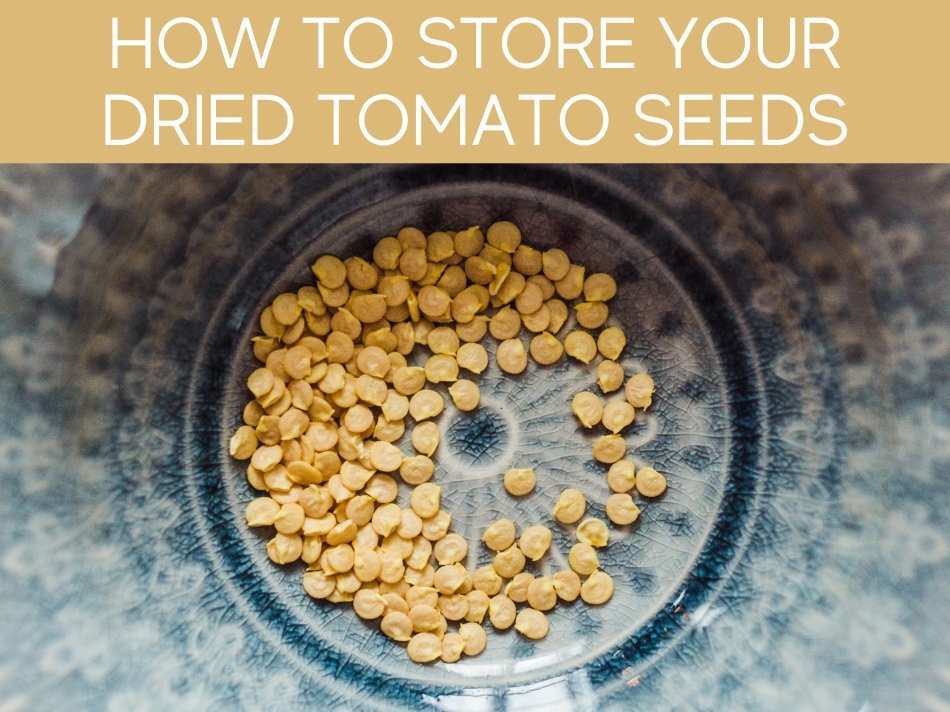
Now that you have dried tomato seeds, store them while awaiting the next planting season.
Good thing, storing tomato seeds takes up such little space.
Put your dried seeds in airtight containers with tightly-fitting lids like jars or use zipped plastic bags. Squeeze out excess air before sealing and if possible, use vacuum seal bags.
Some growers use paper envelopes to store the dried seeds.
Place these containers in a cool, dry and dark place that is moisture-free.
You can also refrigerate the seeds to enable your seeds to last beyond a year or two. However, this isn’t necessary.
Remember to properly label the container or packet with the exact variety of tomato seeds harvested, along with the harvest date as well.
How do you plant dried tomato seeds?
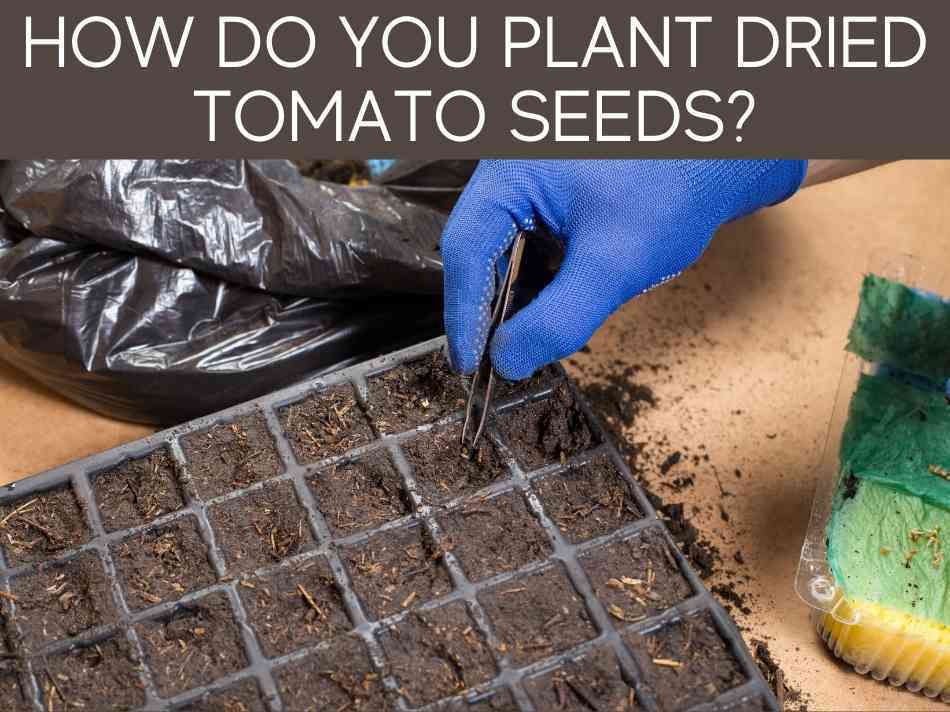
Many gardeners prefer starting tomato seeds indoors quite early in the spring before they are planted outdoors–that way, you get tomatoes earlier in the growing season.
To become viable seedlings that can be planted outdoors, it can take the tomato seeds 6 – 8 weeks.
Once planted outdoors, the seedlings may require as much as 2 months to produce ripe fruit, depending on the variety and size of the tomatoes.
For instance, small cherry tomatoes will begin bearing fruit much faster than large tomatoes.
You probably also want to check out our full article about what soil is best for tomatoes.
How to plant dried tomato seeds (step by step instructions)
To plant your dried tomato seeds in your home garden:
- About 6 to 8 weeks before the last frost in spring, start tomato seeds indoors. Each tomato seed should be grown individually in a labeled pot with drain holes at the bottom, and with a light, seed-starting potting mix.
- Bring your plants near a bright window or under a fluorescent bulb set a few inches above the plant. This ensures warmth necessary for germination.
- Water gently to moisten the top layer. Keep the mix moist over time but not soaking wet, and after a few days, the seedlings will start germinating.
- Once true leaves emerge on all the seedlings after a few weeks, transplant the seedlings to larger containers so they have room to grow and develop properly. Afterward, gently water the seedlings to settle the plants.
Caring for your tomato seedlings
When the seedlings are 3 to 4 inches long, and the night time temperatures are consistently above 50 degrees, it is time to plant these well-rooted, and established seedlings outdoors.
Start by hardening off your seedlings for a week before transplanting them in the ground. In this case, gradually expose your indoor-grown seedlings to sunlight and wind till they are fully adapted.
Once your seedlings are hardened, prepare holes with enough spacing to receive the seedlings. Dig holes deep enough to cover the entire stem up to where the leafy branches as this encourages more root growth.
Work compost into the soil before planting, and add some bone meal into the planting hole when transplanting.
Plant the seedling into the holes, and pull the soil around the plant, before adding organic mulch like straw or shredded leaves to keep the soil around the plant moist.
Water your plants regularly and consistently to keep the soil moist but not saturated.
Since tomatoes are heavy feeders, fertilize your tomato plants well throughout the growing season for the best growth.
Caring for full-grown tomato plants
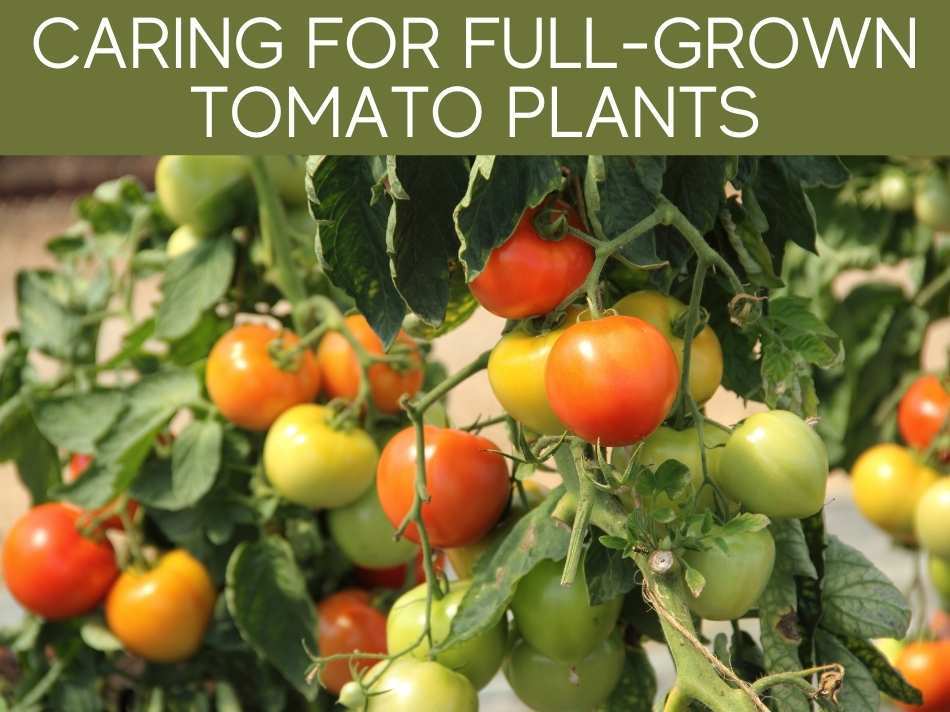
As your plant grows, remember to prune it, and monitor for pests in order to treat your plants before fully infested.
You might also be required to protect your tomato plants under a plastic tunnel or floating row cover in case the night temperatures get colder than 55°F (13°C) or the day temperatures go above 95°F (35°C) to keep the flowers from setting fruit.
Remember to also erect your tomato supports, making sure they are strong and well-secured, because tomato plants will grow large and heavy with fruit.
For example, tomato cages or attaching tomato stems to stakes to help support the plant more vertically.
It’s a common agricultural practice to grow tomatoes from dried tomato seeds.
This is because drying tomato seeds allows you to store seeds for a longer period so you can plant during the next growing seasons.
Gardeners are also able to preserve their tomato varieties by storing seeds and have a better harvest.
